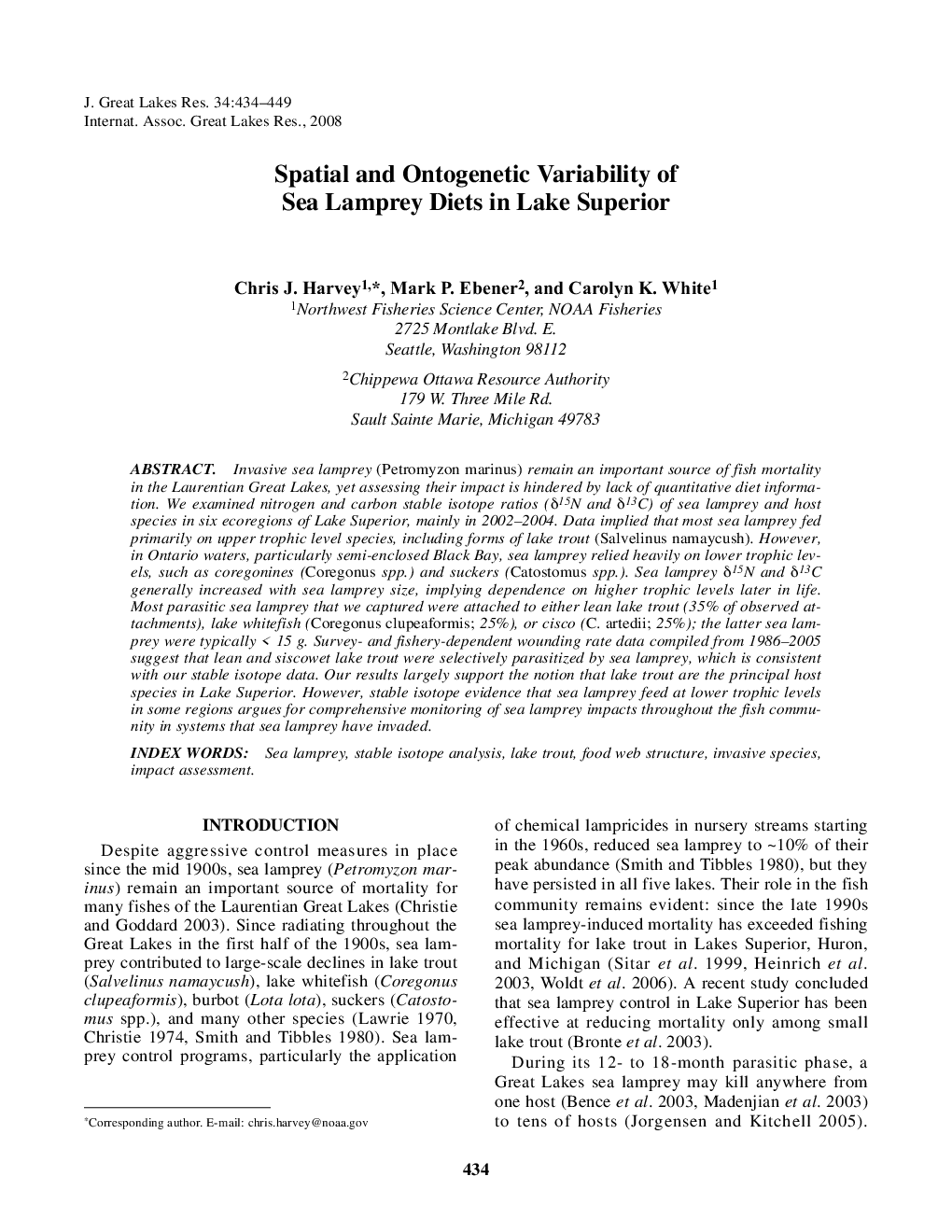| کد مقاله | کد نشریه | سال انتشار | مقاله انگلیسی | نسخه تمام متن |
|---|---|---|---|---|
| 4399267 | 1306727 | 2008 | 16 صفحه PDF | دانلود رایگان |
عنوان انگلیسی مقاله ISI
Spatial and Ontogenetic Variability of Sea Lamprey Diets in Lake Superior
دانلود مقاله + سفارش ترجمه
دانلود مقاله ISI انگلیسی
رایگان برای ایرانیان
کلمات کلیدی
موضوعات مرتبط
مهندسی و علوم پایه
علوم زمین و سیارات
علوم زمین و سیاره ای (عمومی)
پیش نمایش صفحه اول مقاله

چکیده انگلیسی
Invasive sea lamprey (Petromyzon marinus) remain an important source of fish mortality in the Laurentian Great Lakes, yet assessing their impact is hindered by lack of quantitative diet information. We examined nitrogen and carbon stable isotope ratios (δ15N and δ13C) of sea lamprey and host species in six ecoregions of Lake Superior, mainly in 2002-2004. Data implied that most sea lamprey fed primarily on upper trophic level species, including forms of lake trout (Salvelinus namaycush). However, in Ontario waters, particularly semi-enclosed Black Bay, sea lamprey relied heavily on lower trophic levels, such as coregonines (Coregonus spp.) and suckers (Catostomus spp.). Sea lamprey δ15N and δ13C generally increased with sea lamprey size, implying dependence on higher trophic levels later in life. Most parasitic sea lamprey that we captured were attached to either lean lake trout (35% of observed attachments), lake whitefish (Coregonus clupeaformis; 25%), or cisco (C. artedii; 25%); the latter sea lamprey were typically < 15 g. Survey- and fishery-dependent wounding rate data compiled from 1986-2005 suggest that lean and siscowet lake trout were selectively parasitized by sea lamprey, which is consistent with our stable isotope data. Our results largely support the notion that lake trout are the principal host species in Lake Superior. However, stable isotope evidence that sea lamprey feed at lower trophic levels in some regions argues for comprehensive monitoring of sea lamprey impacts throughout the fish community in systems that sea lamprey have invaded.
ناشر
Database: Elsevier - ScienceDirect (ساینس دایرکت)
Journal: Journal of Great Lakes Research - Volume 34, Issue 3, 2008, Pages 434-449
Journal: Journal of Great Lakes Research - Volume 34, Issue 3, 2008, Pages 434-449
نویسندگان
Chris J. Harvey, Mark P. Ebener, Carolyn K. White,